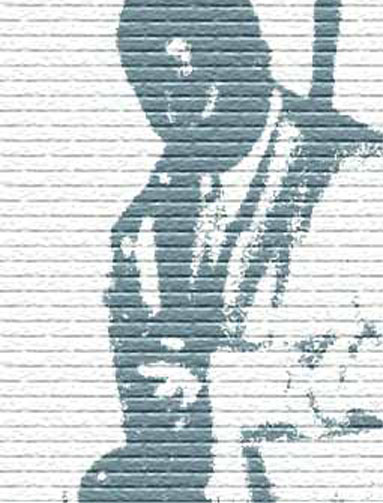(1996-….) a guided improvisation for saxophone player, tape and live electronics [7’ 04”]
Premiered at XIV Colloquio di Informatica Musicale, Limonaia di Villa Strozzi, Firenze, May 9th 2003
Alto saxophone: Gianpaolo Antongirolami
Sound projection: Roberto Doati
Realized with a Fellowship from Bogliasco Foundation, Centro Ligure per le Arti e le Lettere
If we could hear all the sounds of the world,
we’ll immediately go crazy.
Charlie Parker
In 1995 I was requested from Claudio Ambrosini to write a work with instrument and electronics to be performed by his Ex Novo Ensemble. It had to be part of a collection of works commissioned to different composers with peculiar indications: they could have been arrangements from pop or jazz standards, with or without improvisation. I decided to work with a well-known Italian jazz saxophone player -Pietro Tonolo- to a piece where improvisation and electronics were closely connected each other, but within the classical XX century musical language. The concert with the first performances was fixed in the following year at Sale Apollinee, in the Gran Teatro La Fenice in Venezia. When the Teatro burned in January 1996 I was at the beginning of my work, and the bitterness and despondency that took me because of the loss of such a cultural and affective heritage were so strong that several times during the following years I tried to conclude it. In 2002 I can consider it finished but not complete, just as a “work in progress” could be, exactly as the theatre rebuilding works are: until today they are not completed.
It is well known that in the last years of his life, Charlie Parker was more and more interested in classical XX century music. Once he called Edgar Varèse, asking him to have composition lessons. His wish was so strong that he volunteered to be Varèse waiter in case the money he offered had been considered not enough from the french composer. Finally Varèse accepted, but starting after his imminent trip to Europe. When Varèse came back, Parker was dead.
In my piece I try to bring this never happened meeting. The electronic part is based on Varèse Octandre, both from the sonological and formal point of view and on this tape -or the recording or real performance of Octandre– the saxophonist has to play following a score containing improvisation outlines often recalling be-bop style. Before the performance the solo saxophone is recorded, and some fragments are computer transformed and added to the electronic part for a next performance. So when a new saxophone player will perform the piece, he/she will improvise also on a previous improvisation. This rebuilding and “ruins” overlaying process will proceed while there will be a new saxophone player wishing to perform the piece.

